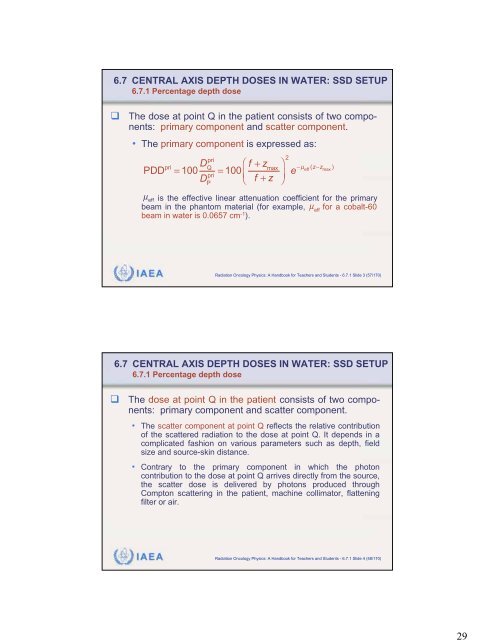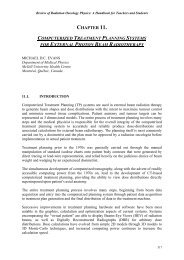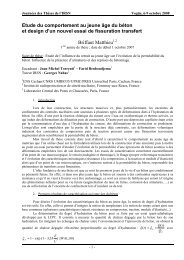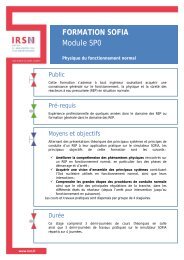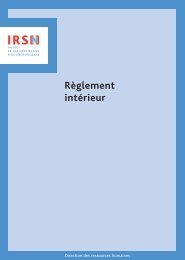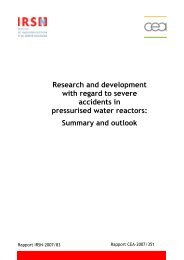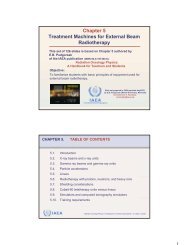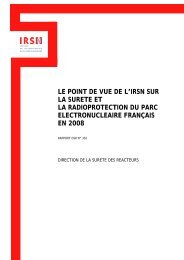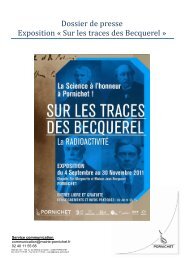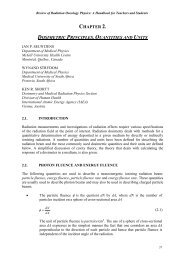Chapter 6 External Photon Beams: Physical Aspects - IRSN
Chapter 6 External Photon Beams: Physical Aspects - IRSN
Chapter 6 External Photon Beams: Physical Aspects - IRSN
You also want an ePaper? Increase the reach of your titles
YUMPU automatically turns print PDFs into web optimized ePapers that Google loves.
296.7 CENTRAL AXIS DEPTH DOSES IN WATER: SSD SETUP6.7.1 Percentage depth doseThe dose at point Q in the patient consists of two components:primary component and scatter component.• The primary component is expressed as:PDD pri = 100 D priQ= 100 f + z maxpriDP f + z2e μ eff (zz max )μ effis the effective linear attenuation coefficient for the primarybeam in the phantom material (for example, μ efffor a cobalt-60beam in water is 0.0657 cm -1 ).IAEA Radiation Oncology Physics: A Handbook for Teachers and Students - 6.7.1 Slide 3 (57/170)6.7 CENTRAL AXIS DEPTH DOSES IN WATER: SSD SETUP6.7.1 Percentage depth doseThe dose at point Q in the patient consists of two components:primary component and scatter component.• The scatter component at point Q reflects the relative contributionof the scattered radiation to the dose at point Q. It depends in acomplicated fashion on various parameters such as depth, fieldsize and source-skin distance.• Contrary to the primary component in which the photoncontribution to the dose at point Q arrives directly from the source,the scatter dose is delivered by photons produced throughCompton scattering in the patient, machine collimator, flatteningfilter or air.IAEA Radiation Oncology Physics: A Handbook for Teachers and Students - 6.7.1 Slide 4 (58/170)


